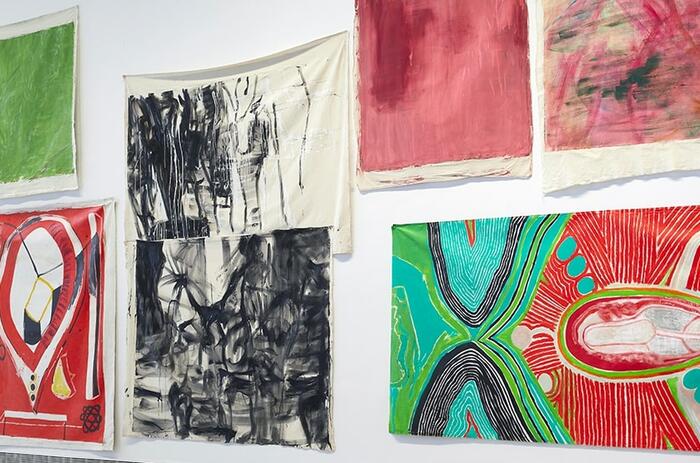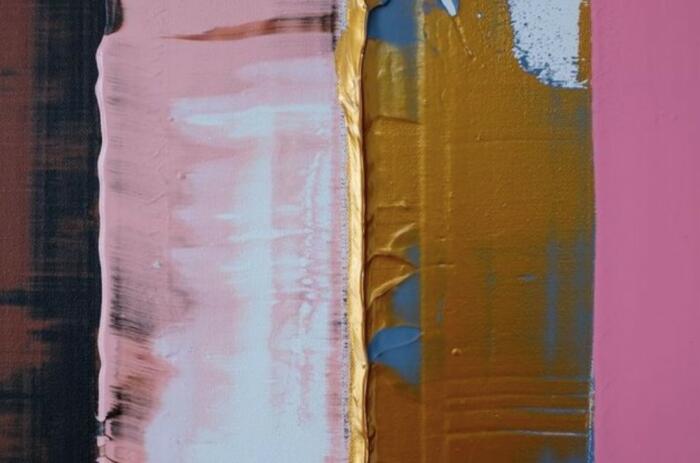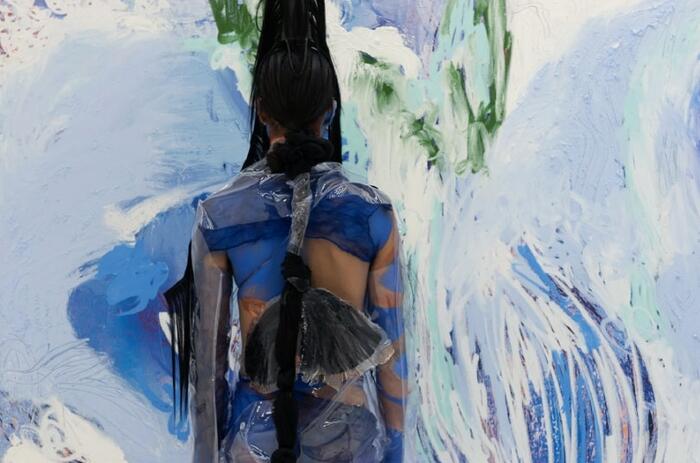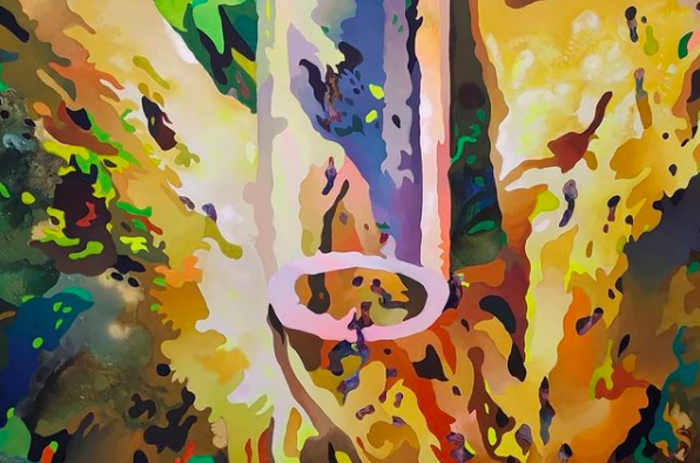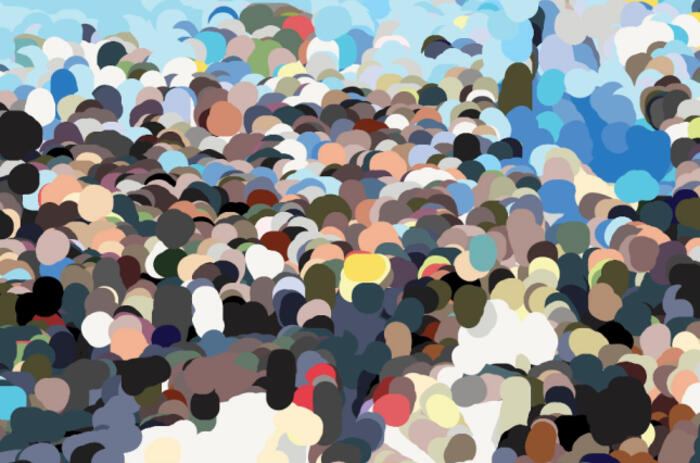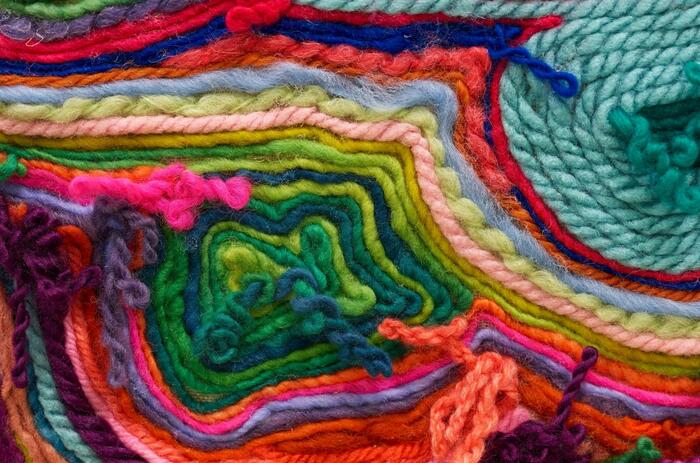OTHER POSSIBLE WORLDS
Is a visual manifesto possible? How to show the possible dialogues between art and education? How many images are within each image? How many words are in each word? What's in between? With these questions, the Argentine artist Marina De Caro introduces us to her exhibition Tierra de las emociones perdidas (Land of Lost Emotions), at the Ruth Benzacar gallery in the city of Buenos Aires, which brings together her most recent production.
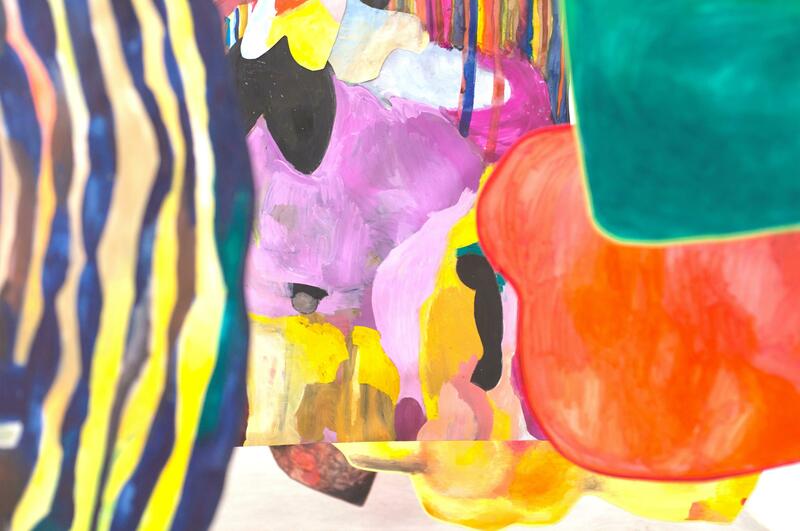
The proposal is constituted in an intense visual, physical and reflective journey that, almost imperceptibly, leads us to return again and again to the initial questions and ask ourselves others, in a mobilizing experience for our body and autonomy, certainties and searches, sensitivity and knowledge.
At first, the scene in the gallery room is both enigmatic and playful to the eye. Determined to enter it, a plaster and bronze sculpture imposes itself with its robust appearance of a body/volume. Crouched? Of imprecise identity: an animal, a being in mutation? The body prior to the artistic and educational experience? Ambiguity will appear again and again as a fertile field to which the artist resorts to expand possibilities. Near the first sculpture lie on the floor superimposed, and others hung on the wall, nine tablecloths/Picnic spaces painted in oil on textiles with vibrant colors. Between the pamphlet and the poetry with different fonts, each one contains a phrase that builds the school proposed by the artist: “School of lost emotions”, “Dissonant teachers”, “Leisure School”, “School that listens”, “ Compass body ”,“ School without reason ”. These De Caro schools were born several years ago and are historically anchored in the anarchist picnics between the 19th and 20th centuries, which dealt with the idea of the modern School. The artist's proposal of this "nomadic architecture" of the canvas, easy to carry and highly flexible, puts the urban space in perspective as a place for meeting, dialogue, circulation of knowledge, openness. The other school that we know, on the other hand, is built on a solid, fixed, monumental architecture with closed rooms, hierarchies and regulated conversations. "The school is the great land where we rehearse other possible worlds and without a doubt it is a place to share," says the artist, whose reflection on these issues has led her to formulate educational programs in artistic institutions.
At all times, De Caro moves away from categorizations and restrictive definitions to give rise to a reflective exercise guided by the body. “It is the body that generally guides me in everything. And in education, it is also the body that commands as a complete sensitive and intellectual entity”, the artist expresses to Arte al Día. The tour continues through the thirteen suspended paintings Naves nubes (Cloud Ships) made in oil on paper, double-sided and sewn by machine. A fantastic forest of shapes and colors -between the painting and the object, when presenting volume- that urges us to decide the path to discover the multiple views and perceptions offered by the works based on their reversibility and rupture with the frontal vision. A constantly expanding and changing facility with various entrances and exits, turns, angles. At the same time, on the pictorial surface of each Nave Nube, there are other chromatic relationships and lines with variation of energy and rhythms. “They are paintings like a pandemic gesture of having the images in suspense a bit; more a sensitivity than a narrative construction of images or figures”, points out the artist. Color and its sensory impact constitutes a subject of permanent investigation and experimentation in her work.
-
Naves nubes, 2021. Tinta, pastel tiza, óleo sobre papel cosido a máquina, cinta al bies y guata 130 x 89 cm.
-
Vista de sala. Conjunto de Naves nubes, Tinta, óleo sobre papel cosido a máquina, cinta al bies, 2021.
-
Naves nubes, 2021. Óleo sobre papel cosido a máquina, cinta al bies y guata. 84 x 204 cm
-
En primer plano Naves nubes, Tinta, óleo sobre papel cosido a máquina, cinta al bies, 2021. Detrás dibujo en pastel tiza sobre pared.
As we leave this "forest" of Nubes Naves, between heaven and earth, emptiness and fullness, plane and volume and chromatic relationships, a sculpture woven with aluminum wire of another fantastic image of a body/volume awaits us. It is about "the availability of a porous and sensitive body that is allowed to filter by experience", in the words of the artist, with a light, ductile structure, of brilliant color and an upright appearance. Is it the same body from the beginning of the exhibition after going through the educational picnic experience and leaving the path of Naves Clouds transformed? Is our own image lighter, more perceptive and flexible after having gone through these proposed experiences? There is no need to find or rush answers, each work seems to tell us, reminding us of the richness of the questions to activate free thought. Having arrived at the supposed end of the road, we must go through it again to go towards the exit. Then, reversibility reappears offering a new experience.
Marina De Caro was born in the city of Mar del Plata (Buenos Aires province), in 1961. She is a visual artist and a graduate in Art History with an extensive and outstanding career with solo and group exhibitions in national and international institutions.
"Art is the great land where we rehearse other possible worlds and without a doubt it is a place to share," writes the artist. This exhibition, in turn, enables one to rehearse a reading from the context of a pandemic marked by the relationship between space and the body, questions and answers, the fixed and the flexible, the closed and open spheres, the individual and the social, reason and emotion and time and everything we can discover "between." And, in this sense, she reminds us that freedom and creativity can always be exercised, even in moments where they seem to be restricted. We can all sketch other possible worlds.
Until September 10th
Ruth Benzacar Gallery
J. Ramirez de Velasco 1287, City of Buenos Aires.
By appointment only (due to Covid-19 protocols) at: www.ruthbenzacar.com

